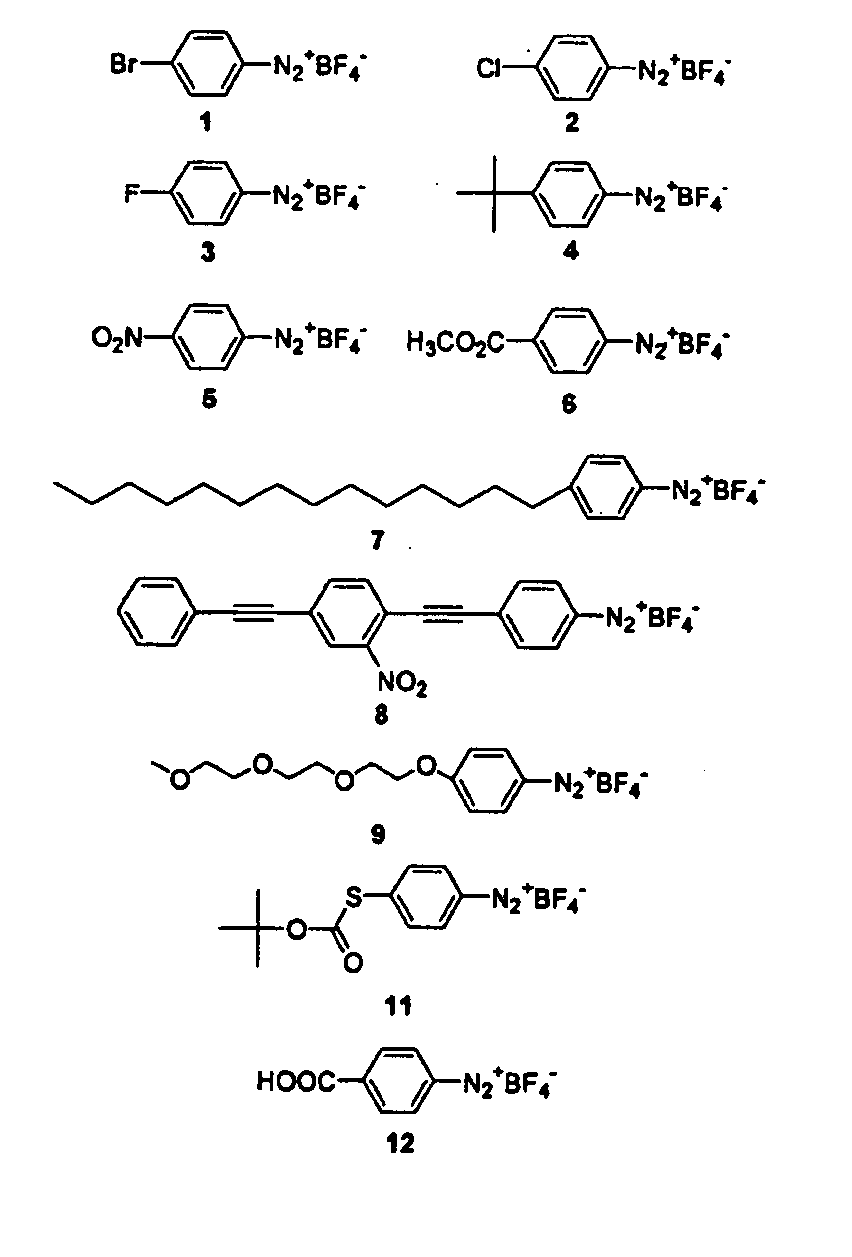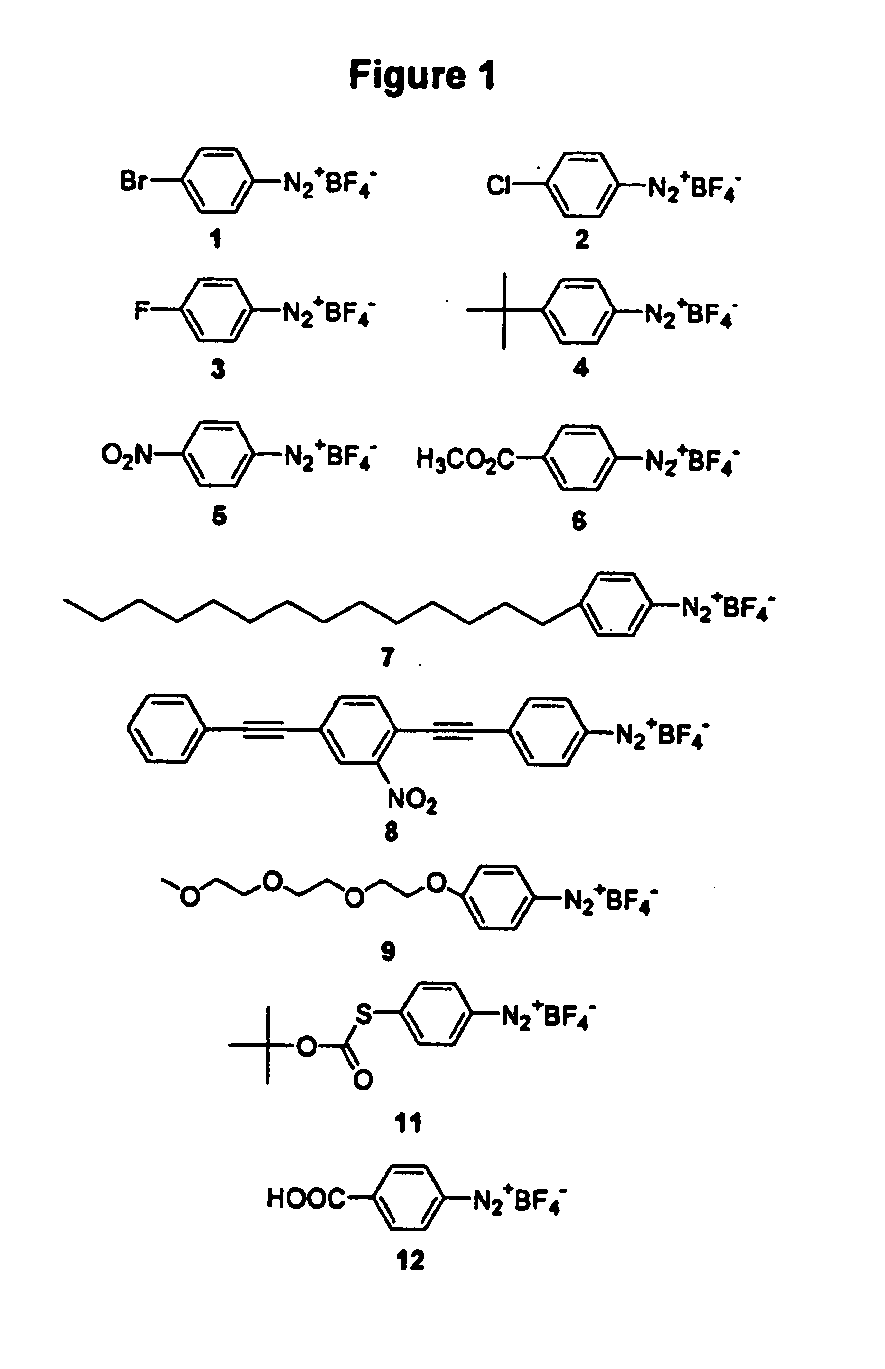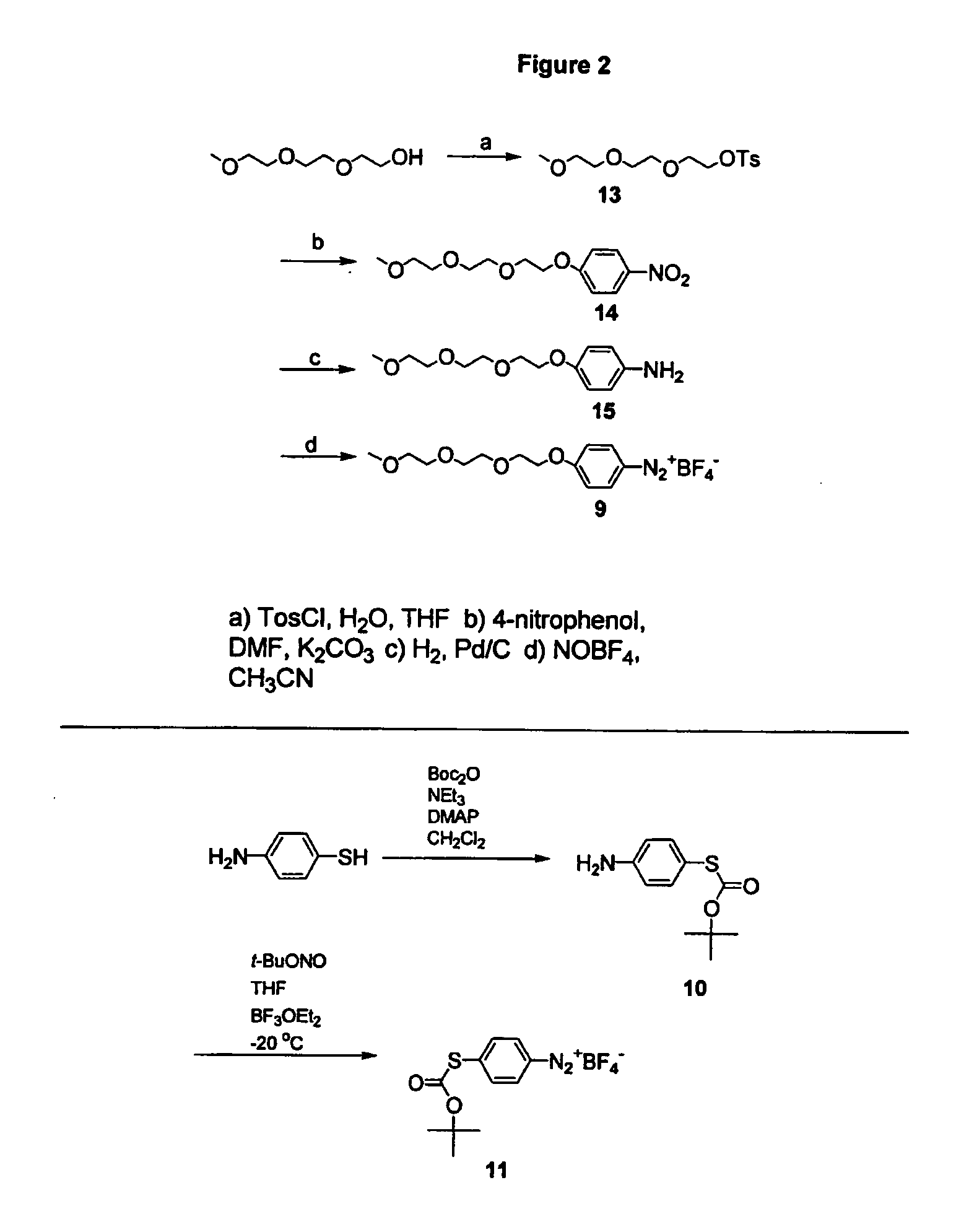Process for attaching molecular wires and devices to carbon nanotubes and compositions thereof
a carbon nanotube and molecular wire technology, applied in the field of carbon nanotubes, can solve the problems of incompatibility of certain processes, slow report on chemical manipulation of nanotubes, and inability to covalently derivatize single-wall carbon nanotubes, and achieve the effect of scalability
- Summary
- Abstract
- Description
- Claims
- Application Information
AI Technical Summary
Benefits of technology
Problems solved by technology
Method used
Image
Examples
example no.18
EXAMPLE NO. 18
[0095] Derivatization with aryl diazonium species can also be induced photochemically. A photochemical reaction was performed utilizing 4-chlorobenzenediazonium tetrafluoroborate, which is the same diazonium species prepared and utilized in Example No. 2. Thus, a suspension of SWNT-p in 1,2-dichlorobenzene was created by sonication. To this suspension was added a portion of the diazonium salt dissolved in minimal acetonitrile. The resulting mixture was stirred while residing within the chamber of a photochemical reaction apparatus, with an excitation wavelength of ca. 254 nm (an ultraviolet light source). The light source for the photochemically induced reaction may be any wavelength, and typically is an ultraviolet or visable wavelength. This reaction is reflected in FIG. 15. The resultant material was similar in all respects to SWNT-2 that was prepared by the electrochemical technique of the present invention.
[0096] This experiment further confirmed that reaction of...
PUM
| Property | Measurement | Unit |
|---|---|---|
| accelerating voltage | aaaaa | aaaaa |
| temperature | aaaaa | aaaaa |
| temperature | aaaaa | aaaaa |
Abstract
Description
Claims
Application Information
 Login to View More
Login to View More - R&D
- Intellectual Property
- Life Sciences
- Materials
- Tech Scout
- Unparalleled Data Quality
- Higher Quality Content
- 60% Fewer Hallucinations
Browse by: Latest US Patents, China's latest patents, Technical Efficacy Thesaurus, Application Domain, Technology Topic, Popular Technical Reports.
© 2025 PatSnap. All rights reserved.Legal|Privacy policy|Modern Slavery Act Transparency Statement|Sitemap|About US| Contact US: help@patsnap.com



